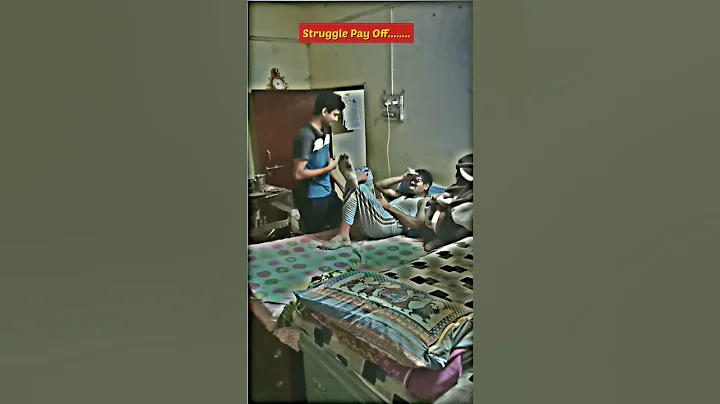
To quickly close a potential high-quality customer, you often need to go through five stages.
The five stages are: "Getting a link", "Screening", "Entering the wild", "Breaking the situation", and "Quick deal" . Our first step is to actively or passively attract customers and bring them in. There are many ways for to bring in customers, such as introductions from friends, reception at exhibitions, platform inquiries, software development, etc., which are currently the main sources.
When we get a business card from a customer, it does not mean that we have contacted the customer. We also need to dig, research and screen the customer's background.
Of course, each company entered the current industry at a different time, and its awareness of e-commerce is also different. Sometimes there may be no important information on the Internet or in the customer's contact information. The best suggestion at this time is to ask questions directly. For customers who do not know much about the background, I personally recommend asking the following three questions:
- give us general idea about your order quantities?
The focus of the first question is to know whether the customer has imported from China. It is very important to have experience in importing, because if the customer has not imported from China and just wants to try it out, then it will be very, very difficult to cooperate with this customer, or the negotiation cycle will be very long. In the case of , this customer is not worth spending too much time on follow-up and maintenance, because we do not have so much time to wait for the customer to grow.
The focus of the second question is to know which ports customers mainly ship from, so that can roughly analyze the provinces or regions where customers currently cooperate with suppliers. For example, mainstream ports such as Guangzhou and Shenzhen, you probably know that suppliers come from the Pearl River Delta region, and Ningbo and Shanghai ports mainly come from the Yangtze River Delta region.
The focus of the third question is to know the approximate size of the customer. Once you know the customer's purchase volume, you can make a reasonable plan for subsequent quotations and time allocation.
Once we determine the potential attributes and quality of this customer, it is necessary for us to extend our olive branch of friendship and seriously try to contact the customer through different methods. Phone, email, WeChat, WhatsApp, Skype, etc.
We need to seriously analyze every sentence or even word in the customer's inquiry content or email or chat process, and try our best to find the customer's concerns and real needs from this information.
In this process, the most fearful thing is that one person directs and performs a one-man show. If the customer can give us some positive feedback or positive replies, then it can be said that our first step has been completed.
At this point, careful friends may have discovered that although the business has just begun, our follow-up work is often already in progress.
02
Filter
There is an 80/20 rule among customers, that is, 80% of sales come from 20% of customers. This determines that sales staff should not allocate sales energy equally to each customer, but should pay full attention to a small number of but important customers, fully apply limited sales resources to them, and achieve twice the result with half the effort.
There is a probability of sales. The larger the numerator, the greater the chance of a transaction.
1.80/20 rule is the "magic bullet" of sales.
According to this rule, we can divide customers into general customers and large customers. Although large customers account for a smaller proportion of all customers, their sales are very large. Therefore, many sales now realize the importance of key customers. They not only develop different levels of reward systems to attract key customers, but some also set up key customer departments to be responsible for selling to this consumer group. At the same time, we are constantly taking some measures to guide ordinary customers to gradually transform into large customers, so as to achieve the purpose of quickly increasing product sales.
By applying the 80/20 rule to marketing, we can find very valuable sales strategies, which become the "panacea" for sales staff.
2. Pay as much attention to the interests of old customers as you do to new customers.
We can also discover the significance of the 80/20 rule for sales to old customers.
For a long time, under the influence of production concepts and product concepts, sales staff have often focused their sales efforts on competing for new customers. In fact, old customers will bring more benefits than new customers. While savvy salespeople strive to create new customers, they will also find ways to convert customer satisfaction into lasting loyalty, value the interests of old customers as much as they do new customers, and regard establishing long-term relationships with customers as the goal of sales development.
3. Uncover the value of key customers.
The key to success is to determine where the 20% of customers who bring 80% of the profits are, and retain them. Using the 80/20 rule can also help us dig out the value of some key customers.
Customer loyalty: The most important thing is that the seller has irreplaceable competitiveness, which makes customers dependent on us. Loyal customers will not be pried away by others and are an asset to the company. But shopping malls are like battlefields. There are no permanent friends, only eternal interests. Therefore, companies must find ways to cultivate customer loyalty.
In other words, make him unable to live without you. If good service can make customers unable to live without you, give them the best service. If the uniqueness of your product makes him inseparable from you, take this uniqueness to the extreme. That's what the saying goes, if there are conditions, you have to go up, and if there are no conditions, you have to go up even if you create conditions.
Suggestion A: If you quote the actual price and encounter bargaining, especially if the bargaining is severe, you can deal with it coldly as appropriate.
Suggestion B: If you want to screen high-quality customers, you can provide free value-added services, but do not provide free activities. All purely free activities bring more negative energy, spam information and spam customers to businesses. On the basis of fees, let customers experience more and better value-added services, so that customers feel that they are worth their money with you.
03
入野
If you have ever made a purchase, you will find that you need to mentally rank each of your cooperation or potential suppliers according to high, medium and low. The relationship between is like a "best friend", and the stickiness is extremely high. Those who have a cold attitude, procrastination and dishonesty are "relegated to the sidelines". You only need to think of them when comparing prices. Those that are quite satisfactory can be flexibly grasped according to the actual order situation. Similarly, when you are doing sales, in the buyer's mind, you are being screened all the time: eliminated or promoted.
For example, many customers of place orders after contacting us for one or two years or even three or four years, so this process often takes a long time. Because when you are observing your customers, your customers are also secretly observing you. He needs time to accumulate and observe your every word and action. He will not tell you what you did well or poorly.
As the saying goes, customers are right there, they don’t come or go.
04
Breaking the situation
When negotiations proceed to a certain extent, various problems will arise. Among these various problems, there is always a core problem that needs to be cleared.This barrier is like a very ferocious tiger, blocking the middle of the transaction road, making it difficult to advance or retreat. such as payment methods, samples, trust, certificates, etc. are the most common "tigers".
illustrates with a real case from his personal career:
01
Potential customer S, the price is acceptable, the sample is passed, and the delivery date is acceptable, but the payment method is stuck when confirming the order. The customer has always been very strong in the local market, insisting that the payment method for the first cooperation must be 30% advance payment, and 70% must be seen in the scanned copy of the bill of lading , and said that all the suppliers currently cooperated with this payment method, even advance payment The ratio is lower such as 20% or 10%.
But the boss was unwilling to accept it and felt that the risk was relatively high. After all, it was the first time to cooperate and it was FOB designated freight forwarder. The entire negotiation was suspended at that time. After consultation, discussion, and careful consideration behind , we decided to accept the customer's payment method. This cooperation lasted for 5-6 years, and subsequent facts proved that customers were very trustworthy in terms of payment.
02
I contacted customer M through a friend’s introduction. M is a local professional brand dealer and is a large and medium-sized potential customer. After quotation and counter-offer, understanding of product details, and verification of trade terms, the customer is interested in placing a trial order. But they asked us to send 5 product samples in the quotation for free for testing and bear all international express costs . They made it clear that they would only place an order if they confirmed that the samples met the requirements. If they did not send samples or did not Pay the shipping costs so you don’t have to continue the exchange.
At that time, I did not reply immediately to the customer's email. Instead, after thinking about it for 3-4 days, I decided to give the customer free proofs and pay for the postage myself. Finally, after sample confirmation, PI, deposit, and production, we started our first cooperation.
03
I received a high-quality inquiry from customer C, who I have been working with currently. C's inquiry content is very detailed, the needs are clear, and the attitude is very sincere. They sincerely expressed their sincerity in looking for new suppliers and the problems with current suppliers.
After many emails and long phone calls, the customer was quite satisfied with our price, delivery time and other services. But the strange thing is that the customer has no intention of placing an order and just expressed that he will continue to keep in touch. And this wait made me wait for almost a year.
In the second year, we happened to go to the country where customer C was located to participate in the exhibition. So in order to express our sincerity, we contacted the customer in advance to make an appointment to visit , and showed the real situation of our company and some of our understanding of the industry and market. The customer was very satisfied. After we returned to China, he took the initiative to contact us and quickly placed the order.
05
Quick transaction
01
Don't introduce new products to customers
Once you find that the customer has received the customer's buying signal, don't introduce new products to the customer, otherwise the customer will see too much. After that, they will leave because it is difficult to choose. Therefore, customers should be guided to focus on the products they have carefully selected, and should not distract customers.
02
Help customers narrow down their choices
Usually after customers see too many products, they will be overwhelmed and find it difficult to make up their mind to buy. Therefore, if shopping guides want to close a deal quickly, they must help customers narrow down their choices. Generally speaking, it is best to limit the customer's choice to about 2 types, and no more than 3 types at most.
If the customer wants to see more, he should move or take away the items he doesn't like. However, when taking away the goods, be sure to do it in a relaxed, natural and casual manner. You cannot just put your head away and put away the goods, leaving the customer Feeling left out.
03
Help customers determine what they like as soon as possible
After seeing some products, many customers will be hesitant, as if they like this and that. So we need to help customers determine the products they like as soon as possible. So what is the product that customers like? Generally speaking, the products that customers see the most, ask the most, pick the most, look at the longest, and touch the most The most products are those that customers like.
can also compare the products that customers have seen but don’t like very much with the products that customers like. Customers will immediately have a psychological comparison, speeding up the selection process.
04
Praise the customer
Many times, the customer has found a product she likes, but due to various worries and hesitations, he has been hesitant to make a decision. At this time, we can praise the customer, give them confidence, and then facilitate the transaction, such as: "You are really discerning. This product you like has been selling very well recently. Many people come to the store specifically to look for this product. It is affordable and of high quality." Very good. If you decide to buy this product, can I place an order for you now? "
05
Using the psychology of trial
Sometimes, when customers make up their minds to buy, they still have some worries, for example, they are worried that their partner will not like it after buying it. At this time, we can choose to take a step back and suggest that the customer try to buy it back to have a look. We should also give the customer appropriate encouragement and tell the partner that even if he doesn't like it, that's what he wants, and the other half will definitely appreciate it. You can also tell customers about our XX-day replacement policy to eliminate customers’ worries.
06
Use benefits to guide customers
When customers want to buy but are still hesitant, tell them the benefits they will get from buying now to encourage them to buy immediately. For example: "Our products are only on sale for these few days, which is very discounted. And now you can get XX when you buy products here. There are also cards in it for drawing. If you are lucky, you can draw a mysterious gift. If in a few days To buy it every day, you have to buy XX yuan to enjoy such a good opportunity. "
What needs to be pointed out here is that these five stages are flexible and not static. Sometimes the five processes may be indispensable. Maybe in one step. Because we are facing a complex and ever-changing diversified world, what foreign trade needs most is flexible response.
If you want to become a top foreign trade salesperson, you need not only basic skills and skills, but also a breakthrough in fundamental thinking: 12 thinking habits that you must have to become a top foreign trade salesperson





















